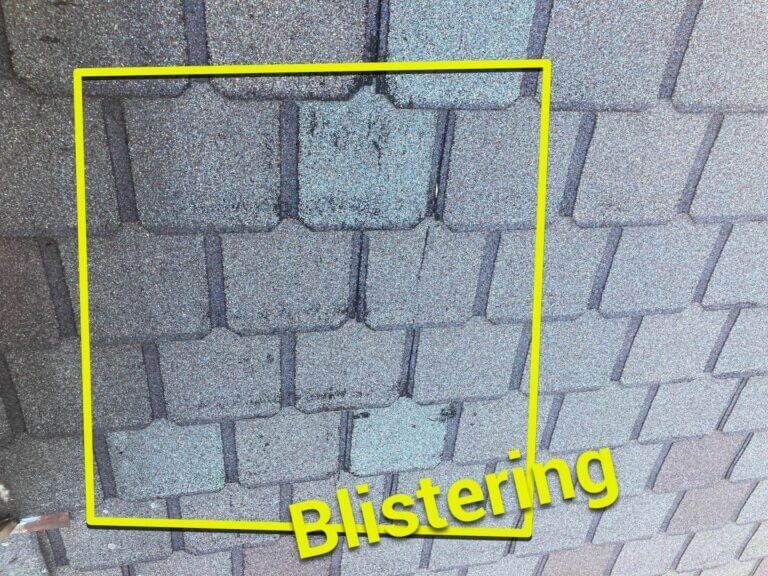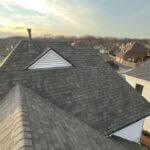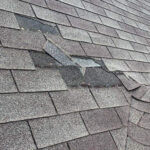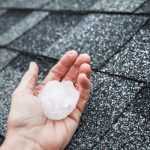
What is Thermal Blistering on a Roof?
In the world of roofing, distinguishing between various types of damage is crucial for effective maintenance and repair. One such phenomenon that often confuses homeowners is thermal blistering on roofs. This condition, frequently mistaken for hail damage, has distinct characteristics and causes. This blog delves into what thermal blistering is, how it differs from hail damage, and underscores the critical role of proper roof ventilation in preventing such issues.
What is Thermal Blistering on a Roof?
Thermal blistering occurs when pockets of air or moisture trapped within the roofing material expand due to heat. This expansion causes the layers of the roof, particularly in asphalt shingles, to rise and form blisters. Over time, these blisters can pop, leaving the roof vulnerable to further damage and leaks.
Common Causes of Thermal Blistering
- Poor Ventilation: Inadequate ventilation in the attic is a primary contributor to thermal blistering. Without proper airflow, heat builds up, causing the trapped gases or moisture in the roofing material to expand.
- Moisture in Roofing Material: Moisture can become trapped in the roofing material during the manufacturing process or installation. When this moisture heats up, it expands, leading to blistering.
- Intense Sun Exposure: Continuous exposure to direct sunlight can elevate roof temperatures, exacerbating the blistering process.
How Thermal Blistering Differs from Hail Damage
While both thermal blistering and hail damage can leave visible marks on your roof, their origins and characteristics are quite distinct:
- Thermal Blistering:
- Appears as raised areas or bubbles on the shingles.
- Typically forms in patterns or clusters, influenced by the areas of trapped moisture or air.
- Does not usually remove granules from the shingles until the blister pops.
- Hail Damage:
- Results in distinct, usually circular, dents or depressions on the shingles.
- Can occur randomly across the roof, without a specific pattern, mirroring the hail’s trajectory.
- Often leads to immediate loss of granules, exposing the asphalt layer beneath.
Misidentifying thermal blistering as hail damage can lead to incorrect assessments and, consequently, improper repair methods. It’s crucial for homeowners and roofing professionals to distinguish between the two accurately.
The Importance of Proper Ventilation
Proper roof and attic ventilation plays a pivotal role in maintaining the integrity of your roofing system. Effective ventilation helps regulate attic temperatures and moisture levels, thereby reducing the risk of thermal blistering. Key benefits include:
- Temperature Regulation: Adequate ventilation ensures that hot air doesn’t build up in the attic, keeping roof temperatures in check and preventing the overheating that leads to blistering.
- Moisture Control: Good airflow helps dissipate moisture that may otherwise become trapped within the roofing materials, further mitigating the risk of blistering.
- Extended Roof Life: By maintaining a stable environment, proper ventilation contributes to the longevity of your roof, reducing the likelihood of premature wear and tear.
Preventive Measures and Solutions
To safeguard your roof against thermal blistering, consider the following preventive measures:
- Ensure Adequate Ventilation: Regularly inspect your attic and roof ventilation systems to ensure they are functioning correctly. This might include soffit vents, ridge vents, and other ventilation aids.
- Regular Roof Inspections: Schedule professional roof inspections to identify and address potential issues before they escalate. An expert can assess ventilation effectiveness and recommend improvements.
- Quality Roofing Materials: Opt for high-quality roofing materials that are less prone to moisture retention and can withstand temperature fluctuations.
- Professional Installation: Ensure that your roofing system is installed by experienced professionals who can properly seal and ventilate the roof, minimizing the risk of blistering.
Work With Restoration Roofing
Thermal blistering on roofs, often mistaken for hail damage, is a condition that homeowners should be aware of. Understanding its causes, distinguishing it from other types of damage, and recognizing the importance of proper ventilation are key steps in maintaining the health of your roofing system. By implementing preventive measures and seeking professional guidance, you can protect your roof from the adverse effects of thermal blistering, ensuring its longevity and performance for years to come.
For homeowners in regions prone to high temperatures or those concerned about their roof’s ventilation, consulting with a roofing professional can provide tailored solutions and peace of mind. Remember, a well-ventilated, properly maintained roof is not just a protective covering for your home but an investment in its overall safety and value.
For all your roofing needs, trust the experts at Restoration Roofing. We’re more than just a Collierville roofing company; we’re your partners in home protection. Contact us today!
Give us a call at 901-854-3402 or fill out our Contact Us form and we will reach out to you with our next available inspection. Make sure to follow us on Facebook and Instagram for more tips on finding the best roofing contractor for you





